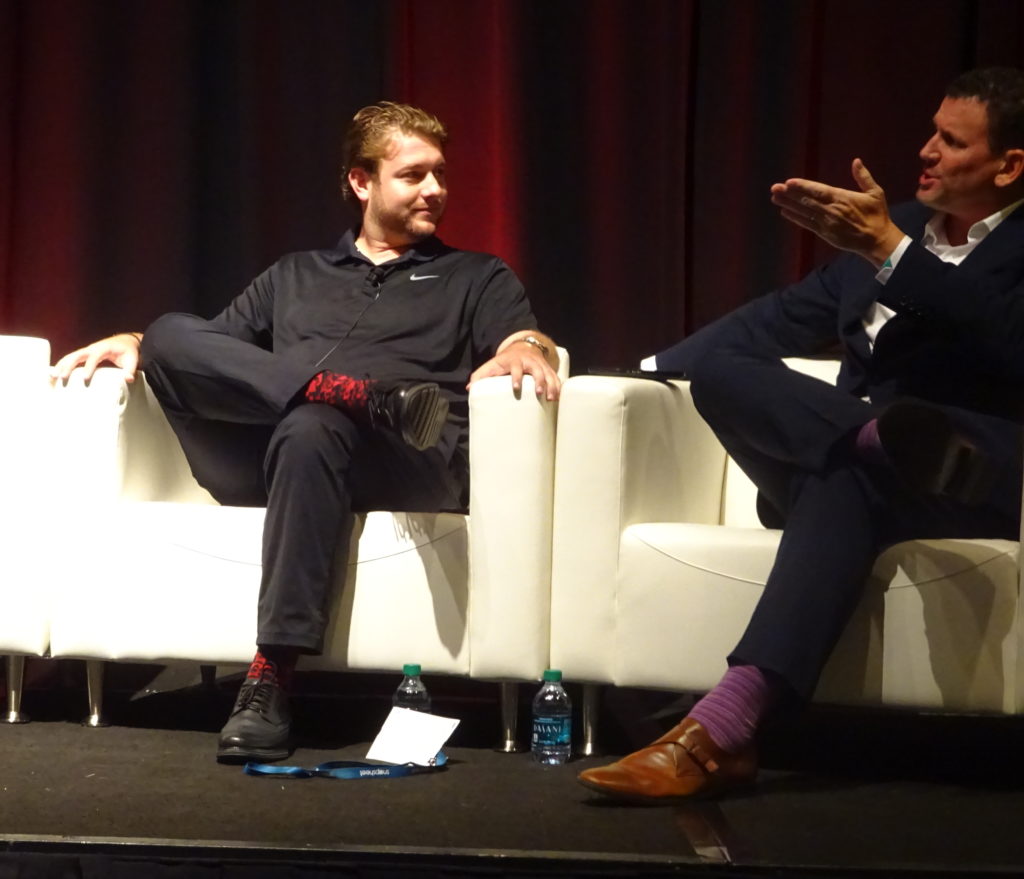
Traditional body shop borrowing options include bank, seller, paint company
By onBusiness Practices | Education | Market Trends | Repair Operations
Private equity firms and other sources of capital might not be interested in shops and stakes below a certain threshold, leaving shops reliant on more traditional sources of financing for acquisitions, according to financial experts.
These creditors typically include paint companies, banks and the seller themselves, according to experts from collision repair M&A consulting firms. Understanding these lenders could be important for a shop looking to successfully grow.
Supplement Advisory Principal Brad Mewes said the most important factor — and probably the “least understood” one — in deciding between different funding sources is the cost of equity.
Let’s say you’re pursuing a few million dollars in debt at even an interest rate as high as 14-18 percent, Mewes said. Sounds exorbitant, but it actually might cost the business less than selling a piece of the company, he said.
Your typical private equity might want at least 20 percent of the business, meaning they’re taking more money out of your company than you’d be paying out at say, 16 percent interest, according to Mewes.
You can also deduct interest on your taxes, lowering the cost of capital further, Mewes said. Even at 15 percent interest, debt might still “lower-cost form” of borrowing than equity, he said.
Banks
Veritas Advisors President John Walcher said banks are much more likely to lend money if real estate is part of the deal, offering as much as 80-90 percent of the fair market price of the land.
Banks tend to shy away from loans for acquisitions unless real estate is included, according to Mewes. It’s a hard asset they can sell off if you default on the loan, more attractive than assets like what might be an already depreciated set of equipment. “Goodwill” factors like brand recognition don’t mean much to a banker.
However, other companies are comfortable with the risk of financing the actual purchase of a business and its intangible assets — they have no interest in real estate, Mewes said.
Securing financing from a bank with such a preference for real estate could be complicated by the way many sellers might have structured their business. For tax purposes, businesses are likely to place their real estate in a limited liability corporation, while the business itself will be established as an S Corporation, according to Walcher.
It’s “very common” a seller would want to be the landlord and sell the buyer just the collision business, according to Walcher. A bank would only loan around 60-95 percent of the value of the tangible assets in this case, he said.
“Most body shops don’t have a lot of tangible assets” making up their overall value, Walcher said.
A shop with a sticker price of $1 million might only have $100,000-$150,000 in tangible assets.
“That distinction is very important,” he said. A company’s brand, employee base and customer relationships might be a big part of the purchase price.
“It’s very illiquid,” Walcher said.
A buyer could pledge the real estate they own as collateral on the loan, which Walcher called “very common” in business. The bank that financed the buyer’s shop real estate might refinance and yield more loan capital.
Walcher said that from time to time, a bank is willing to lend more than just a percentage of tangible assets, but it’s rare.
If it does happen, it’s more likely to be a situation involving a larger regional MSO, with perhaps eight or more shops, and involve an owner with a longstanding bank relationship, a history of payments on time, and assets within a bank. It’s probably going to be a regional bank, for it’s hard to get “that kind of love” from a national bank, Walcher said.
Even in the rare examples where a shop can secure such a loan, it’s probably only going to involve something like 40 percent of the purchase price rather than the 10-20 percent the shop would get under normal conditions, according to Walcher.
Mewes said shops might also fail to secure funding from banks because of a lack of financial preparedness. For example, they might merely bring a profit and loss statement to the conversation and lack an updated balance sheet.
Paint companies
Paint companies are also willing to loan money for an acquisition in the form of a “prebate,” Walcher said. Questions for the shop involve how much they have to spend before the prebate is paid off and what what happens if the shop switches paint brands.
Walcher said paint money is typically used in situations in which small MSOs are trying to buy a single shop. Even the “big dogs” — larger MSOs not at the level of the national consolidators — still use paint money.
“Some love paint debt, and some hate it,” Walcher said. But ultimately, “debt is debt is debt.”
Paint companies also can be helpful in assisting a buyer with the transition of ownership at the new business, he said.
Seller financing
Another method involves seller financing, which is as common if not more common as paint and bank debt among buyers up to the regional MSO level, according to Walcher.
Even the large consolidators used to rely heavily on seller debt, but now they can borrow at lower rates and have an easier process (they don’t need to cut multiple checks to multiple shop owners ever month) with a single bank, Walcher said.
Walcher said seller financing can bring other benefits. The seller and buyer now both have an interest in the deal going well and the buyer succeeding.
He said he always pushed for seller financing during his time at Caliber Collision because it also seemed to signify a safer deal: The seller thought their business would endure.
All-cash deals tended to reveal “more skeletons” post-closing, according to Walcher. He estimated that over his 18 years of deals, 75 percent of cash-only transactions led to a post-closing issue, while a “significantly lower” proportion of seller-financed deals, perhaps 10 percent, yielded problems.
Walcher said savvy sellers will loan on the real estate of the business, allowing them to foreclose on a flaky buyer and at least get their land back.
Walcher gave the example of the M2 bankruptcy. The company didn’t own any real estate, and many of the former owners who sold shops to M2 in a seller-financed deal were able to regain their land, he said.
In such scenarios, the former owners have a prime opportunity, Walcher indicated. Not only do they receive their land back in the event of a default, they could probably obtain the shop business — which still possessed a workforce and customers’ vehicles — at a discount.
Savvy sellers who own both the real estate and the business want to get paid in cash for their business but float the loan themselves for the real estate, according to Walcher.
For example, they loan the buyer 95 percent of fair market value on the real estate but only loan the buyer 10 percent of the purchase amount for the business, according to Walcher. They have a great deal of security.
A less savvy seller or one who doesn’t obtain financial advice early enough might only loan 80 percent of the real estate but 40-50 percent of the business.
Walcher said a rule of thumb for typical business acquisitions involved the seller financing between 40 and 60 percent of the overall purchase price. He said that in his experience, the 40 percent range is more likely. The remainder of the deal is paid for by vendor and bank financing, he said.
Larger buyers will put up as little of their own cash as possible, Walcher said. This might be anathema to a typical body shop owner, who tends to be “fairly conservative” from a finance perspective, according to Walcher.
“They tend to not like a lot of debt,” he said.
He said that once an owner makes the leap of expanding beyond two shops, they tend to be more comfortable with debt.
Good time to grow?
Mewes in 2016 argued that smaller shops must either have impeccably efficient operations and/or a niche core competency, sell out, or reinvest in the business and grow.
Walcher said “I think it’s a wonderful time” for small, well-run operators to consider growth. He said he felt “we’re entering a buyer’s market generally,” and growth was possible for a lower cost than three years ago.
“I would encourage growing” all things being equal, Walcher said.
Growth could be an important business strategy for a small independent operation attempting to stay competitive as consolidators and franchisors rack up national presences.
However, Walcher said a buyer had to have a “well-run” business, pointing out that an acquisition requires “human capital” as well as money.
The kind of owner who’s in his shop every day writing estimates might be spread too thin overseeing two facilities and a transition. However, a company with a strong manager and assistant manager might be well-positioned to grow, Walcher said.
The type of business being acquired can dictate how much effort will be required by the new owner, according to Walcher. If both shops have a similar culture — for example, a Mercedes-certified shop in a large metro area buys its competitor Mercedes-certified shop — it might take less babysitting, Walcher said. But if a DRP-focused company buys an anti-DRP shop — which often happens, according to Walcher — it can be a harder transition, he said.
Other issues could include getting both companies on the same accounting and management system, instituting the buyer’s standard operating procedures and dealing with an overpaid acquired workforce.
Seller cooperation also helps. Walcher recalled one deal where the seller and buyer didn’t get along and “it was rough” for his client. Attorneys for both sides were yelling at each other at the closing, and the day after the close, the son of the seller — who lacked a noncompete — bailed and took all of the technicians and the best estimator with him, according to Walcher.
“That really hurt the buyer,” he said.
Walcher said “it looks sexy” and easy to buy shops, “but it’s not.”
“Doing a deal is not for the risk-adverse,” he said. He recalled another situation where a three-shop repairer overpaid significantly for a fourth and almost lost the entire chain. He had to cut down to two shops just to survive. The company has grown to multiple locations again, but the experience was nearly fatal.
Images:
A combination of seller, bank and paint company financing might be necessary to acquire another auto body shop. (adempercem/iStock)
Car Guys Collision Center operations director D.J. Mitchell, left, listens to Veritas Advisors President John Walcher at the 2018 MSO Symposium at NACE on Aug. 9, 2018. (John Huetter/Repairer Driven News)


